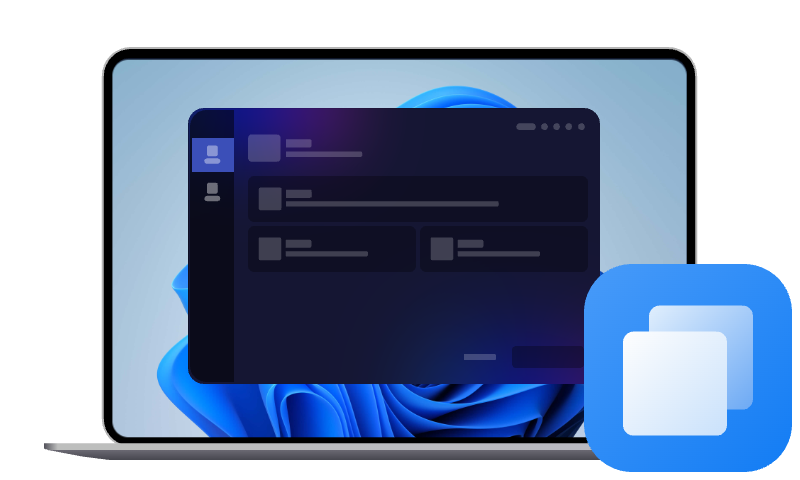Download Clonezilla | Clone Windows 11 to SSD
This article describes Clonezilla Windows 11 and how to use it in detail, along with the best alternative - AOMEI Cloner, which is easy to use and handles all cloning issues very well.
Does Clonezilla Work with Windows 11?
Short answer: YES, Clonezilla works with Windows 11. But before you dive in, let’s break it down.
What Is Clonezilla?
Clonezilla is free and open-source disk imaging and cloning software, developed by NCHC Free Software Labs and supports different operating system and file types, such as NTFS in Windows, EXT 2, 3, and 4 in Linux, and HFS in MacOS. Thus, many users wonder if it works with Windows 11 and want to clone HDD to SSD using it.
Key Benefits of using Clonezilla:
- Completely free and open-source
- Supports MBR and GPT partition schemes
- Clone entire disks or partitions
- Multicast options for massive cloning tasks
- Unattended mode-customize disk cloning needs with boot parameters
- AES-256 encryption for securing data
- Work with different platforms, such as Windows, Linux, and MacOS
But Here's the Catch:
- Not beginner-friendly — It’s text-based, with no graphical interface, which is challenging for most users. You need to learn some advanced knowledge before using it.
- Confusing download session —The official download page requires you to select the CPU architecture and file type you want to save Clonezilla. It should be the default option, but still confusing.
- Only bootable ISO or zip file — You need to create a bootable USB or CD and put the installation file into it. Or directly create one using its ISO file with other tools like Rufus or DiskPart.
- Cloning must be done offline — Clonezilla itself is not an app, and there is no live cloning inside Windows.
In sum, Clonezilla supports Windows 11 but does not provide users with a live cloning app inside Windows. You can only access it like Windows and clone Windows 11 to SSD in the recovery environment.
How to Clone Windows 11 to SSD Using Clonezilla
Ready to roll up your sleeves? Here’s how you can clone Windows 11 to SSD using Clonezilla. It requires you to create a bootable USB to access this software first.
🎯What You’ll Need:
- A working Windows 11 PC
- Prepare and connect a new SSD, preferably with a larger capacity
- A USB flash drive (16 GB+)
- Clonezilla ISO
- Download Rufus or similar tools to create a bootable USB
Part 1: Download Clonezilla for Windows 11
Navigate to the official download page. The default CPU architecture and file type are amd64 and zip, respectively. Here you need to change the file type from zip to iso if you want to use Rufus to create bootable USB and click the Download button.
Part 2: Create a Bootable USB using Rufus
Step1. Connect the prepared USB drive to your Windows 11 PC. Then, open the exe file of Rufus. It will automatically select your USB drive in the Device section. Just be sure it’s the right one.
Step 2. In the Boot selection, click Select to browse and add the previously downloaded Clonezilla ISO file.
Step 3. At last, click START to format and create a bootable USB drive.
Part 3: Access Clonezilla and Clone Windows 11
Step 1. Restart your Windows 11 PC and press the BIOS key, usually F2, F10, F12, ESC, etc., to access the BIOS/UEFI window. Then, change the boot priority to USB. Save changes and start from Clonezilla.
Step 2. After loading Clonezilla, Select the Clonezilla version - Other modes of Clonezilla live to boot from.
Step 3. Select Clonezilla live (To RAM…) in the following window.
Step 4. Select the language and keyboard layout quickly. Then, click Start Clonezilla to get started.
Step 5. Select device-device mode in the following window.
Step 6. Choose Beginner mode (unless you're an advanced user)
Step 7. Choose the disk_to_local_disk option.Then, select the source disk (with Windows 11 installed) and destination disk (prepared SSD) in order.
Step 8. Select whether to check the source disk first. We’ll skip it.
Step 9. Select whether to reboot or shutdown or choose later.
Step 10. Press Enter to start the cloning process. You’ll be asked several times if you want to continue, press Y to confirm and start cloning.
It’s very complex and troublesome, which is not user-friendly. To make sure the process goes smoothly, you need to do a lot of preparation and pay more attention throughout the process without tapping on any wrong steps. Creating a bootable USB can be confusing.
Fortunately, there are many simple and effective hard drive and SSD cloning software you can use such as AOMEI Cloner, which we'll walk you through in detail and step-by-step. More surprisingly, you can directly clone Windows 11 to SSD within Windows.
Best Alternative to Clone Windows 11( Newbie friendly)
AOMEI Cloner is a GUI-based, simple, and effective disk clone software that can clone the entire disk, system partition, and data partition in Windows 7, 8, 10, 11, and Windows Server without any obstacles.

- 👑Bootable clone - Clone HDDs/SSDs or MBR/GPT system disk.The new SSD will remain bootable after cloning.
- Intelligent clone (default) - clone only the used sectors of a drive, making it easier to clone large HDD to smaller SSD while saving a lot of time.
- Edit Partitions - adjust partition size while cloning hard drives to larger drive, especially those with different disk partition styles(one MBR, one GPT).
- SSD Alignment - align HDD and SSD with 4k technology to improve SSD disk performance and their lifespan significantly.
- Disk compatible - compatible with Samsung, WD, SanDisk, Crucial, etc., whether they are NVMe, PCIe, M.2, SATA, or mSATA.
Step 1. Connect the target SSD drive to your computer using a SATA to USB adapter, which depends on your disk interface. Then, open AOMEI Cloner, and click Clone > Disk Clone subsequently.
Step 2. You will then be asked to select the source and destination disks (targeted with equal or larger capacity). Then, click Next after each selection.
- ⛔Warning: The existing partitions on the destination disk will be overwritten or deleted. Please be sure you select the right drive and backup your data (if there are any) in advance. Then, click OK to continue.
Step 3 (Important). Be sure to check the SSD Alignment feature to align HDD and SSD for better performance. You can also enjoy the Edit Partitions feature in the following two situations. At last, click Start Clone to clone Windows 11.
- If the target SSD drive is larger. Select “Add unused space to all partitions” or “Manually adjust partition size”, which can avoid cloned hard drive shows wrong size.
- Both drives have different partition styles (one MBR, and one GPT). Check the option “Convert the destination disk from MBR to GPT” or vice versa to make them identical.
By default, this software will enable the intelligent clone feature to clone only used sectors of a drive. It can avoid the cloned SSD won’t boot issue to the greatest extent possible (if it’s smaller). You don’t need to interrupt any work during this process. Download it to have a try if you want simple, fast, and worry-free cloning software!
Final Thoughts
So, does Clonezilla work with Windows 11? Yes, and it’s incredibly reliable if you’re comfortable with text-based tools and complex steps. But for everyone else (aka 90% of users), it’s challenging and AOMEI Cloner is an easier, faster, and safer choice.
You can directly access this software without creating a bootable USB and set the boot priority for it first. It has a very intuitive interface, even novices can use it quickly. Also, it still offers users some useful features, such as SSD Alignment, Edit Partitions, etc.

